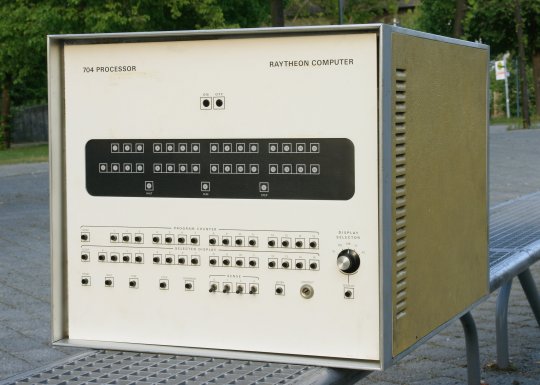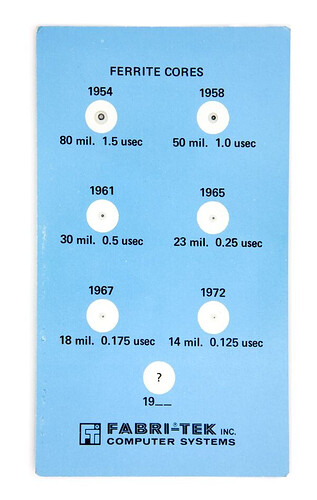During research I found this interesting, squared computer

http://computermuseum.informatik.uni-stuttgart.de/dev/ray704/
Did you take that image, or is it copied from the page you link to?
The wiki article really needs an image.
1 MHz isn’t too bad for core memory!
This also gives us an idea of Moore’s law before Moore’s law: core memory cycle times had come down from 5 µsec at the beginning of the decade to 1 µsec at the end of the decade (for machines that were still somewhat affordable). – While this isn’t doubling every 18 months, it’s not too bad, at all!
(In other words, you could now do easily, what could be done on 48-bit at the beginning of the era, with 16-bit, arguably even more, at a considerably lower cost, and the technology was just becoming ready for another cut in word-lengths. But, in actuality, this was to happen on silicon, at even radically lower costs.)
There was a picture (that I couldn’t find now with a quick search) that showed several generations of cores, with each newer generation core fitting inside the hole of the previous one. So a Moore’s Law indeed.
I suspect the boom of computers in the late 1960’s was do to the fact
TTL went from SSI to MSI. 4 4 bit adders make a 16 bit alu. Core memory stayed
about the same speed other than the top end computer models. PDP-8 vs PDP-15
Regarding “Moore’s law before Moore’s law”, there’s also an impressive story of improving material science and an economy of scale, not unlike what we have seen with silicon, e.g., at the height of the core memory business, DEC was producing 4 billion cores a month, at a diameter of an 8-thousandth of an inch. (The real challenge was still in wiring them up.)
(Source: Ken Olsen’s oral history, https://americanhistory.si.edu/comphist/olsen.html)
No, I don’t took that picture. As stated it’s from the museum.
